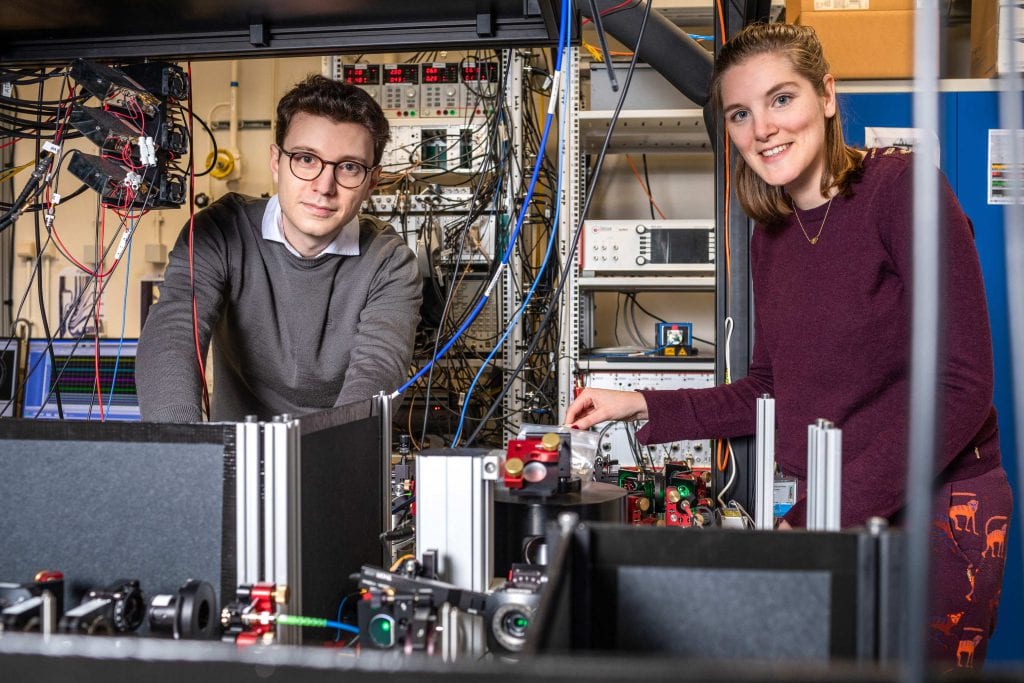In a high-profile Nature article, QuTech PhD alumni Hermans and Pompili show how they transfer quantum information in a network based on entanglement in the Ronald Hanson Lab.
In the basement of the Applied Sciences building Matteo Pompili and Sophie Hermans lay the foundations of the quantum internet. (Photo: Marieke de Lorijn)
Researchers at the Ronald Hanson Lab have been working steadily for years on the entanglement of quantum bits in diamonds and the transmission of quantum information. Their ultimate goal is to create a quantum internet which will enable the unbreakable exchange of quantum information.
They recently took another big step in their work: the transfer of quantum information between two non-directly connected nodes, A and B, through teleportation.
In teleportation, the sender’s quantum bit disappears and reappears on the receiver’s side. Since the quantum bit does not have to travel through the intervening space, it cannot get lost either. This makes quantum teleportation a crucial technique for the future quantum internet.
The technique seems both robust and unbreakable
As mentioned above, nodes A and B are not directly connected, but both are connected to a third point, C. When entanglement is generated between A and C, and between C and B, it causes an entanglement between A and B. This entanglement enables the exchange of quantum information between A and B through teleportation. Confusing? Watch this video:
The first two authors, Sophie Hermans and Matteo Pompili, recently obtained their doctorates on parts of the publication. Last December, Pompili obtained his PhD on quantum networks with qubits in diamonds. Hermans followed this spring with her thesis on quantum networks using electron spins in diamonds. Their Nature publication, supervised by Prof. Ronald Hanson (AS Faculty and QuTech) was submitted in early October last year and published in late May.
‘Quantum teleportation provides reliable transfer of information even in the presence of high lossy network connections’, the researchers write. They attribute this progress to technological improvements in recent years such as: better reading of qubit information, protection of qubit memory when setting up an entanglement, and reliable signalling of an entangled connection.
Follow-up research will focus on reversing the teleportation protocol. A quantum bit must first be teleported, and only then is the teleportation prepared. The quantum information must then be stored while the entanglement is set up. The advantage of this reversal is that, if successful, teleportation can be used at will.
In time, the authors expect this type of teleportation to function as the backbone of the quantum internet because the technique, as it now appears, is both robust and unbreakable.
Do you have a question or comment about this article?
j.w.wassink@tudelft.nl


Comments are closed.